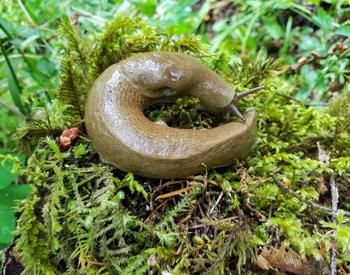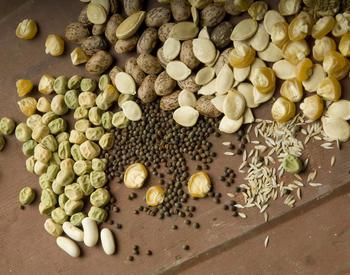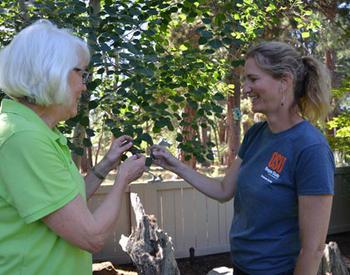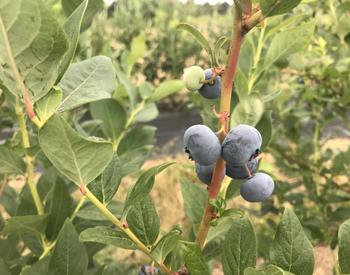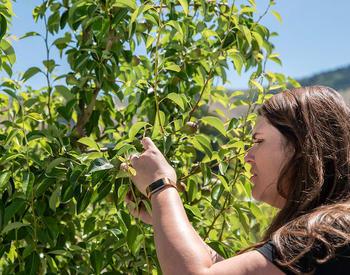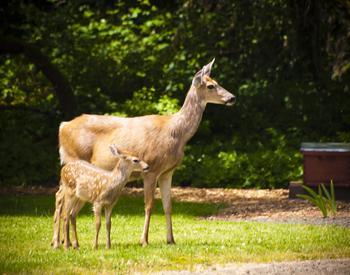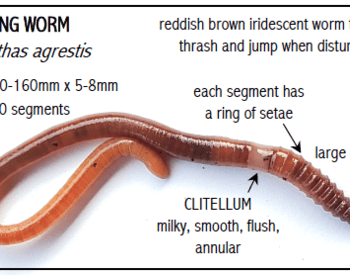Myth #1: “If it’s published, it must be true”
When you read something about gardening in an article or book, try to confirm that the information is valid. One way to do that is to confirm that the source is reliable (such as "Oregon State University").
Myth #2: "Root balls that are covered with burlap must be left intact during transplanting."
The bottom line:
- Balled plant materials covered with burlap usually contain soil that is very different than the soil of the transplant site.
- Differences in soil texture can impede both water movement and root establishment.
- Root defects can only be found and corrected if root ball soil is removed.
- Proper root preparation combined with best practices for planting will improve tree establishment and survival in any landscape.
Myth #3: "Add a layer of gravel or other coarse material in the bottom of containers to improve drainage."
The bottom line:
- Plant containers must have drainage holes for root aeration.
- “Drainage material” added to containers only hinders water movement.
- Use only good topsoil in perennial container plantings for the best water conditions and soil structure.
Myth #4: "Compost is a safe, chemical-free source of nutrients for gardens."
The U.S. Composting Council has a Seal of Testing Assurance (STA) program. Members in this program must test their compost for pathogens, heavy metals, and pesticides on a regular basis.
The bottom line:
- Find sources that offer certified, pesticide-free compost. Homemade compost is a good choice only if your materials are contaminant-free.
- Unregulated compost can contain pesticides, heavy metals, and other environmental toxins that may be harmful to you and your plants.
- If you must spray your lawn with persistent broadleaf herbicides, be sure to use a mulching mower and leave the clippings in place. Do NOT compost them or bag them for clean green removal.
- Test soil for heavy metals in any landscape where there are plants growing food.
Myth #5: "Aerated compost tea reduces plant disease and is a good alternative to traditional pesticides."
The bottom line:
- Aerated compost tea is not registered as a pesticide.
- Aerated compost teas cannot legally be recommended or applied as a pesticide. They have not been scientifically proven to reduce pathogens or control disease.
- Aerated compost teas have not been scientifically proven for use on turf or landscape plants.
- Runoff from compost teas could add to water pollution.
- Aerated compost teas that have molasses, kelp and other additives have been shown to contain E. coli and Salmonella, both of which cause serious illness in humans.
- Non-aerated compost teas might suppress some pathogens on some plants.
Myth #6: "Add a handful of bone meal to planting holes before planting shrubs and trees.”
The bottom line:
- Before you add any nutrients to your landscape, have a complete soil test done first.
- Bone meal supplies high levels of phosphorus and calcium.
- Phosphorus from bone meal does not “stimulate” plant growth.
- High levels of phosphorus from bone meal inhibit growth of mycorrhizal fungi.
- Without mycorrhizal fungi, plants must put all their energy into root growth.
Myth #7: “Healthy soil has high organic content.”
The bottom line:
- Before you add amendments to your garden, have your soil tested to find out its organic matter content and nutrient levels.
- If some organic amendments are low, add only what is needed to correct what's lacking.
- Do not incorporate organic amendments into landscapes destined for permanent installations. Topdress with mulch instead.
- Nutrient levels that are too high can have negative effects on plant and soil health.
- Any nutrients not used by microbes or plants right away contribute to non-point source pollution.
Myth #8: “Uncomposted wood chips can spread pathogenic fungi and bacteria to healthy roots.”
The bottom line:
- Fungal species in decomposing wood chips are usually decomposers, not plant pathogens.
- Healthy soil includes mycorrhizal species needed for optimum root health.
- In healthy soils, beneficial and harmless fungi probably outcompete pathogenic fungi.
- Healthy plants are not at risk from aggressive fungal pathogens.
- Do not amend soil with wood chips; use them only as a topdressing.
- Keep mulch away from trunks of trees and shrubs to prevent aggressive pathogen infection.
Myth #9: “Bark mulch and sawdust look better than wood chips, and they work just as well.”
The bottom line:
- Bark mulch can be contaminated with salt or weed seeds.
- Bark naturally contains waxes that prevent absorption and release of water in landscapes.
- Sawdust is too powdery to use as a mulch. It will prevent water and gas movement as it compacts.
- Softwood bark mulches have tiny, sharp fibers that are not “gardener friendly.”
- Use arborist finely chipped wood chips if you prefer this look.
Myth #10: “Wood chips made from cedars will kill landscape plants.”
The bottom line:
- It is unlikely that wood chip mulches containing cedar will have negative effects on established landscape plants.
- The growth-suppression effects attributed to mulches that contain cedar may actually be due to other factors, like nutrient and light limitations.
- Seeds and seedlings, whether weeds or desirable species, are more sensitive to mulch suppression as they do not have established root systems.
Myth #11: “Newspaper and cardboard sheet mulches are excellent ways to reduce weeds and maintain soil health in permanent landscapes”
The bottom line:
- Newspaper and cardboard sheet mulches can be effective for annual beds if they are properly maintained.
- Sheet mulches can prevent water movement and gas exchange if they are too wet or too dry.
- Newspaper and cardboard sheet mulches are not right for permanent, ornamental landscapes, sites not maintained, or restoration areas.
Myth #12: Herbicides
- It’s not true that non-selective herbicides only kill herbaceous plants. Weed killers for broad-leaved plants, such as dandelions, can kill your broad-leaved ornamentals just as well.
- If you apply pesticides to lawns, keep in mind that tree roots often extend far out from the tree trunk and can take up herbicides too.
References:
- Linda Chalker-Scott, Ph.D., Extension Horticulturist and Associate Professor, Puyallup Research and Extension Center, Washington State University
- Jeff Gillman, Meleah Maynard. “Decoding Gardening Advice” The science behind the 100 most common recommendations. 2012. ISBN 978-1-60469-220-4. Timber Press
- Garden Professors: Science-based gardening information. Extension America’s Research-based Learning Network

